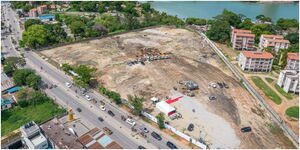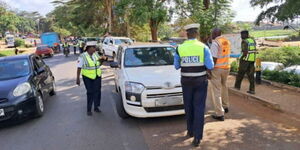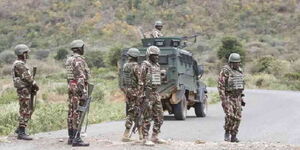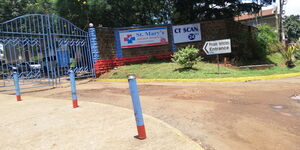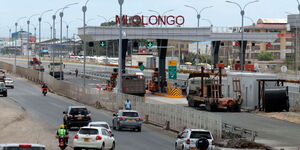It is important to understand the road signs in Kenya if you want to be considered a good road user.
Driving schools are tasked with the responsibility of ensuring that all road users, especially motorists know and understand these signs.
This is why taking tests before being licensed as a valid driver is necessary.
Some of the common road signs on Kenyan roads are impossible to miss. The red triangle is an indicator of an unseen danger ahead. The hazard could be anything from a bend to a hill.
Red circles are harsh warnings and drivers should never neglect them.The blue circles indicate things that drivers must do on particular roads. Ignoring these could very easily work against you.
To avoid getting into accidents, ensure that you always pay attention to these road signs.
4 Categories of Kenyan Road Signs
There are four categories of road signs in Kenya according to the National Transport and Safety Authority's (NTSA) Highway code for all road users.
Most road signs and what they mean are categorized based on what they indicate.
Each category of signs has a distinct graphic representation which makes it easy for drivers to identify.They include:
1. Class A – Regulatory Signs
2. Class B – Warning Signs
3. Class C – Traffic Light Signals
4. Class D – Carriageway Markings and Kerb Markings
Class A – Regulatory Signs
These are mostly circular shaped signs. They instruct motorists and road users on what to do. The circular signs could also be instruction signs.
Class B – Warning Signs
These road signs come mainly with triangular shapes. They are meant to warn road users of certain things that could cause danger.
Some of the road signs in this category include:
Falling rocks ahead
River bend crossing road
Blind spot
Speed bump
Traffic merging ahead
Traffic signal ahead
Uneven road surface
Riverbank with no barrier ahead
Road narrows from the right ahead
All you have to do is to check for the road signs with names and learn how to interpret them because a slight variation in a sign could totally change its meaning.
Class C – Traffic Light Signals
According to The Traffic Act (p. 218), the sequence of the lights shown for the purpose of controlling the movement of vehicles shall be:
(i) red
(ii) red and amber
(iii) green
(iv) amber
The most important rules include these four combinations. However, we strongly recommend that you read all the traffic rules and strictly follow them to avoid any accidents.
Class D – Carriageway Markings and Kerb Markings
Some of these signs are mandatory and must be obeyed, others convey warnings and yet others provide helpful information. In this post, we will summarize these signs.
First, some definitions.
Carriageway signs are those lines you find painted on road surfaces.
In Kenya, these are either white or yellow, and either continuous (sometimes called solid) or broken (sometimes referred to as dashed).
Some are painted in pairs, “double lines”, other times a single line is used. Longitudinal lines are set alongside the direction of traffic flow. Transverse lines are set across the roadway, perpendicular to the flow of traffic.
Here they are:
Yellow color
Yellow longitudinal lines are used to separate traffic flowing in opposite directions.
Therefore you should always keep them to your right. This is a helpful clue in the case you ever see a yellow line along your left-hand side, you are clearly driving on the wrong side of the road.
Yellow markings on kerbs are used to prohibit stopping or parking alongside such kerbs.
Kerb markings
Specifically, a continuous yellow line on a kerb prohibits all vehicles (except bicycles) from stopping beside the line, except for as long as necessary to comply with the movement of traffic or the requirements of another traffic sign; or enable a passenger to board or alight the vehicle; or enable goods to be loaded or unloaded from the vehicle.
White color
White lines on the carriageways or on kerbs are used in all other instances. Solid lines imply a mandatory requirement that you don’t cross or straddle them.
Broken longitudinal lines are permissive, while continuous ones are restrictive. Double continuous lines indicate maximum levels of restriction; you should not cross or straddle them.
You must not cross or straddle continuous longitudinal lines as these are commonly used to prohibit overtaking along dangerous bends and steep ascents.
And this injunction is stronger for double solid lines. When a solid line is paired with a broken one, you may cross or straddle it if the broken line is on the left of the solid one otherwise, you are prohibited from those actions.
Going by the number of vehicles we see overtaking along, or driving astride, both solid and double solid lines all over the country, clearly these rules are highly misunderstood or actively flouted.
Take heed though as, fortunately, there is often enforcement effort by traffic police officers in some of these areas particularly on heavily trafficked inter-city roads.
Conversely, you may cross or straddle broken longitudinal lines as long as doing so does not inconvenience or endanger the safety of other road users.
For example, you may do so in order to overtake slower vehicles, change lanes or turn onto another road.
Hatched areas
Another associated type of marking consists of an area that is hatched or hashed in yellow or white diagonal lines bordered by continuous lines of the same color.
All vehicles are prohibited from crossing or straddling these markings. The only exception is when the vehicle’s size or construction causes it to do so, and the encroachment is not more than is reasonable under the circumstances.
This is another often abused type of road sign in Kenya, with speeding drivers using these areas as “overtaking lanes”, especially on rural roads. You would do well to be on the lookout for traffic police officers if you use this unsafe maneuver routinely.
Pedestrian crossings (aka “zebra crossings”)
A roadway marking consisting of white longitudinal lines extending across the road, accompanied by a blue “Crossing Place for Pedestrian” traffic sign indicates a crossing place for pedestrians and requires that all vehicles approaching it to give way to any pedestrian crossing the area marked by the strips.
Similarly, a roadway marking consisting of two white transverse lines accompanied by the “Stop, Children Crossing” traffic sign or a traffic light signal, requires every vehicle approaching it to stop and not encroach on the area between the lines if doing so would endanger or inconvenience a pedestrian thereon.

